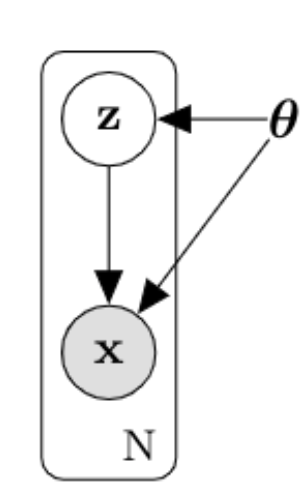What is the Wake Sleep Algorithm 🌱
Hemholtz Machine
 |
 |
We have two networks:
- Recognition network with weights converts input data into latent representations used in successive hidden states .
- Generative network reconstructs data from the latent states using weights .
The Hemholtz machine tries to learn and such that
- is the variational distribution approximating the posterior
Wake Phase
- Feed into the recognition network to get and
- Draw samples
- For each feed into the generative network to get for the likelihood Bernoulli(x;
- Optimize for
- Simulate latent state by feeding input data to recognition network and maximize how well the generator’s probabilities for the hidden state fit the actual data.
Sleep Phase
- Draw
- Sample from the generative network
- Feed into the recognition network to get and
- Compute
- Optimize
- Simulate random data by following the generator. Then maximize the probability that the recognition network suggests the correct latent states given the simulated .
Notes mentioning this note
There are no notes linking to this note.